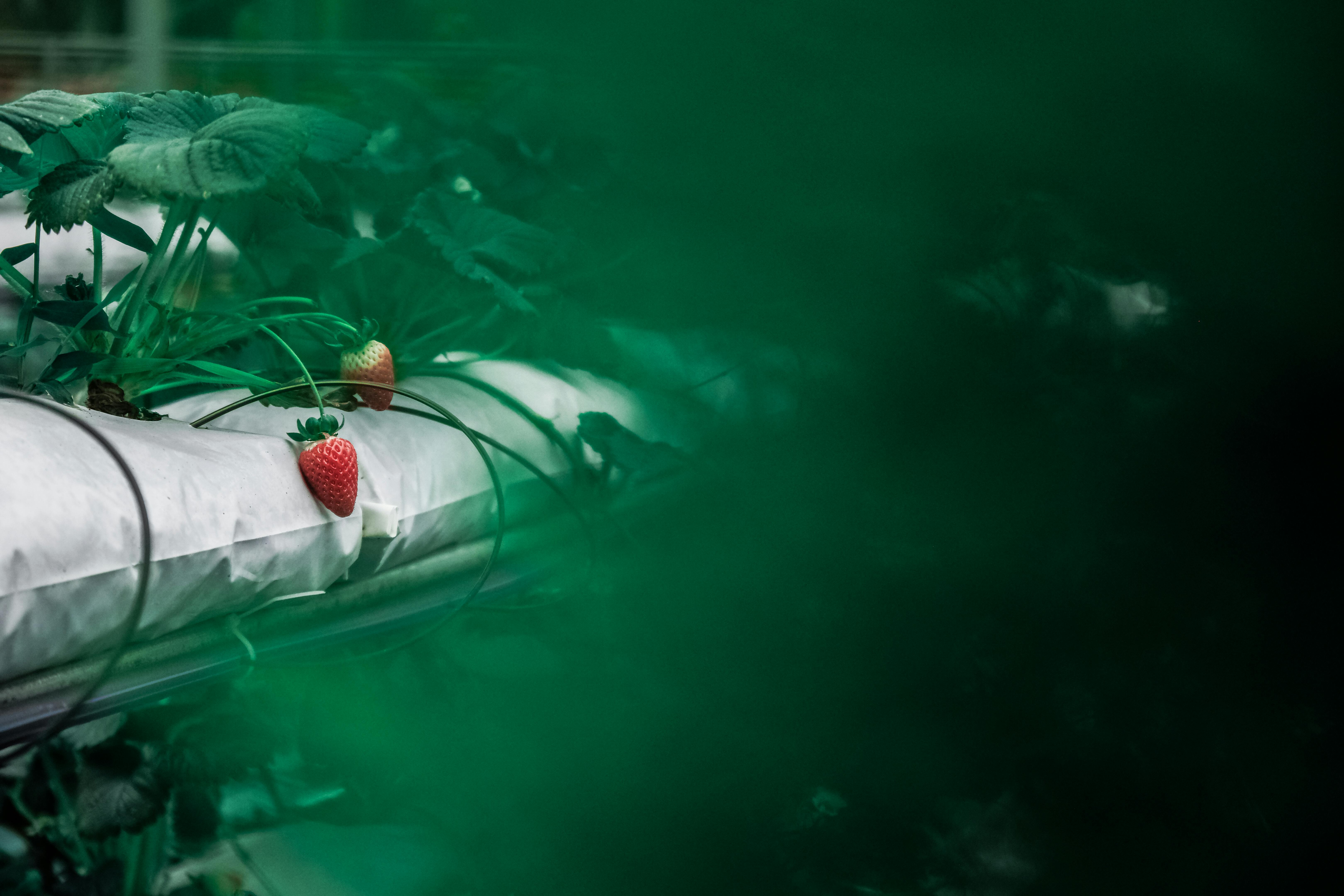Strawberries are a favorite fruit of many Texans and there is nothing more enjoyable than picking them from your own garden. Fortunately, the climate in Texas provides the perfect conditions for growing strawberries, so long as you know when to plant them. In this guide, we will provide advice for gardeners on when to plant strawberries in Texas and other tips for success.The best time to plant strawberries in Texas is during the fall season. In Texas, strawberry plants should be planted between mid-September and early November. This allows the plants to become established before cold weather arrives and will ensure a good crop the following spring.
Soil Requirements for Growing Strawberries in Texas
Strawberries do best in well-drained, sandy loam soil with a neutral pH of 6.0 to 6.5. The soil should be moist but not waterlogged, and it should remain consistently moist throughout the growing season. To achieve this, it is recommended that mulch or straw be used to retain moisture, reduce weeds, and keep the fruit clean. Organic matter such as compost should also be added to the soil to help improve drainage and nutrient availability.
Climate Requirements for Growing Strawberries in Texas
Strawberries require cool weather and plenty of sunlight to thrive in Texas. Planting should occur in late fall or early winter when temperatures are cooler and there is adequate sunlight available for optimum growth. During the summer months, plants can become stressed due to high temperatures and lack of water. Therefore, it is important to irrigate regularly during hot weather to ensure proper growth and fruit production.
Preparing the Soil for Planting Strawberries
When planting strawberries, the most important part of the process is preparing the soil. Proper soil preparation ensures that your strawberry plants will have the best chance to thrive and produce an abundant crop of sweet, delicious fruit. To get started, you will need to choose a location that gets at least 6-8 hours of direct sunlight each day.
The next step is to test your soil to determine its pH level. Strawberries prefer slightly acidic soil with a pH of 6.0-6.5. If your soil is too alkaline, you can add sulfur or composted manure to bring down the pH level so it’s more suitable for growing strawberries.
Once you have determined that your soil has an acceptable pH level, it’s time to mix in some organic matter such as compost or aged manure to help improve drainage and aeration. This will also help keep weeds at bay and provide valuable nutrients for your plants.
After adding organic matter, you will need to till or dig up the soil to a depth of 8-10 inches (20-25 cm). This will help break up any clumps and ensure that all areas are evenly prepared for planting.
Finally, be sure to remove any rocks or debris from the area before planting your strawberry plants. Once everything is ready you can begin planting your strawberry plants according to package directions or local recommendations.
With proper preparation, your strawberry plants should thrive and produce an abundant crop of sweet fruit in no time!
How to Plant Strawberry Crowns
Planting strawberry crowns is an easy way to get started growing your own strawberries. Crowns are the parts of a strawberry plant that have roots and a small portion of stem attached. Planting crowns is a simple process that will give you loads of delicious strawberries in the summer months. Here are the steps you need to take to get your strawberry patch established:
1. Choose a sunny location for your strawberry patch. Strawberries need at least 6 hours of direct sunlight every day in order for them to produce vigorous, healthy plants and lots of tasty fruit. Make sure the soil is well-drained, as soggy soil can lead to fungal disease and root rot.
2. Dig out shallow trenches or beds for your strawberry plants. The trenches should be around 15cm (6 inches) wide and 10-15cm (4-6 inches) deep. Space the trenches approximately 30cm (12 inches) apart.
3. Place each crown into its own trench, making sure that the roots are spread out evenly and pointed downwards into the soil. Cover each crown with soil, leaving only the top few centimetres uncovered.
4. Water each crown thoroughly after planting, making sure that each one gets plenty of moisture without becoming waterlogged or soggy.
5. Add organic mulch around each crown to help retain moisture in the soil and suppress weeds from sprouting up around your plants.
By following these steps you’ll have healthy strawberry plants producing delicious fruit in no time!
Watering Tips for Growing Strawberries in Texas
Growing strawberries in Texas can be a fun and rewarding experience. However, it is important to ensure that your plants are properly watered in order to get the best results. Here are some tips for watering your strawberries in Texas:
1. Water your strawberries deeply and infrequently. This will help encourage deep root growth and will help prevent disease. Make sure to water the soil around the plants rather than wetting the leaves directly.
2. During the hottest months, water your strawberries more frequently as they may need up to an inch of water each week.
3. Use a soaker hose or drip irrigation system to conserve water and ensure that your plants get enough moisture without wasting any of it.
4. Make sure not to overwater your strawberry plants as this can lead to root rot and other problems. Monitor the soil moisture levels regularly and adjust accordingly.
5. Mulching with straw or pine needles can also help retain moisture in the soil, which will help reduce the amount of time you need to spend watering your plants each week.
By following these tips, you can ensure that your strawberry plants stay healthy and produce plenty of delicious berries throughout the season!

Mulching and Fertilizing Strawberry Plants in Texas
Mulching and fertilizing strawberry plants in Texas is an important step in getting a successful harvest. Strawberries require well-drained soil that is rich in organic matter. Mulching with straw, hay, pine needles, or other organic materials helps keep the soil cool and moist while suppressing weeds. It also adds nutrients to the soil as it decomposes. To ensure optimal growth and fruit production, fertilize your strawberry plants with a balanced fertilizer that contains nitrogen, phosphorus, and potassium. Apply the fertilizer at the recommended rate according to the instructions on the product label. Additionally, supplement your strawberry plants with calcium-rich lime or gypsum every few years to help prevent blossom end rot. Proper mulching and fertilization can help you produce a bountiful harvest of sweet strawberries!
Planting Strawberries
Planting strawberries is one of the most rewarding activities for a gardener. They require minimal effort and can produce delicious fruits in just a few months. The best way to get started is to purchase strawberry plants from a garden center or online nursery. When purchasing plants, make sure they are certified disease-free and healthy. Plant them in an area with well-drained soil and full sun exposure. Dig a hole deep enough to cover the roots and firm the soil around the plant. Place straw mulch around the plant to help keep moisture in during dry periods and reduce weeds. Water the plants regularly, but avoid overwatering as it can cause root rot.
Training and Pruning
Once your strawberry plants have been planted, you will need to train them properly for maximum production. Start by removing any dead or diseased leaves or stems from the plant, then prune off any weak shoots that are growing out of the main stem. This will help promote strong growth from the crown of the plant, where new flowers are produced each season. Training your strawberry plants also helps to keep them neat and prevents overcrowding which can stunt growth and reduce yields. You can use wooden stakes or trellises for training if necessary.
Fertilizing and Watering
Fertilize your strawberry plants twice per season with a balanced fertilizer such as 10-10-10 or 5-10-5. Make sure not to over fertilize as this can burn the roots of your plants, resulting in stunted growth and poor yields. Water your strawberries regularly throughout the growing season, making sure that they receive at least 1 inch of water per week during dry periods. Mulch around your plants with straw or hay to help retain moisture in hot weather.
Harvesting
Strawberry fruits will be ready for harvest when they turn red in color and reach full size (about 1 inch). Gently twist off each berry with your fingers when ripe, taking care not to damage other nearby fruits or stems during harvesting. Enjoy eating fresh strawberries right away, or store them in an airtight container for up to 4 days in a refrigerator for later use.
Controlling Weeds and Pests When Growing Strawberries in Texas
Growing strawberries in Texas can be a rewarding experience. However, it is important to practice proper weed and pest control to ensure a successful harvest. Proper weed control is essential for preventing weeds from competing with the strawberry plants for water, nutrients, and sunlight. Pest control is also important for protecting the strawberries from disease and insect damage. Here are some tips for controlling weeds and pests when growing strawberries in Texas.
One way to prevent weeds from taking over your strawberry patch is by using mulch. Mulching around the strawberry plants helps to prevent weed seeds from germinating and keeps moisture in the soil. It also helps to reduce soil erosion and can improve soil fertility by adding organic matter to the soil as it breaks down. For best results, use organic mulches such as grass clippings, straw, or shredded leaves.
Another way to control weeds is by hand weeding or hoeing around the strawberry plants. This should be done on a regular basis throughout the growing season to remove any new weeds that may have germinated or grown since the last weeding session. Make sure you remove any roots or runners of perennial weeds so they don’t regrow.
When it comes to controlling pests, it is important to inspect your strawberry plants regularly for any signs of insect damage or disease. Common pests that affect strawberries in Texas include aphids, slugs, spider mites, whiteflies, and thrips. If you find any of these pests on your plants, you can use an appropriate pesticide according to label directions.
Another way to protect your strawberry plants from pests is by using row covers or floating row covers. These covers provide a physical barrier between your plants and insects while still allowing sunlight and air circulation into the plant bed. Row covers should be used during times when pests are most active such as during early spring when aphids are most prevalent.
Finally, companion planting can be an effective way of controlling pests in your strawberry patch without using chemical pesticides. Certain herbs such as mints, garlics, onions, marigolds can help repel harmful insects while attracting beneficial ones such as ladybugs which feed on aphids and other garden pests.
By following these tips for controlling weeds and pests when growing strawberries in Texas you can have a successful harvest of delicious berries each year!

Conclusion
Texas gardeners can successfully grow strawberries with careful preparation and planning. Planting should take place in late fall or early winter, preferably after the first hard freeze. Strawberries may also be planted in late winter or early spring, after the last frost. When planting, it is important to consider soil type, location, and variety of strawberry. Gardeners should also be aware of common pests and diseases that can affect strawberry plants. By following these steps, Texas gardeners can enjoy a plentiful harvest of sweet and juicy strawberries for many years to come.
Maintaining a strawberry patch is a rewarding experience for gardeners. With careful planning and preparation, Texas gardeners can have a successful harvest of delicious strawberries year after year.



